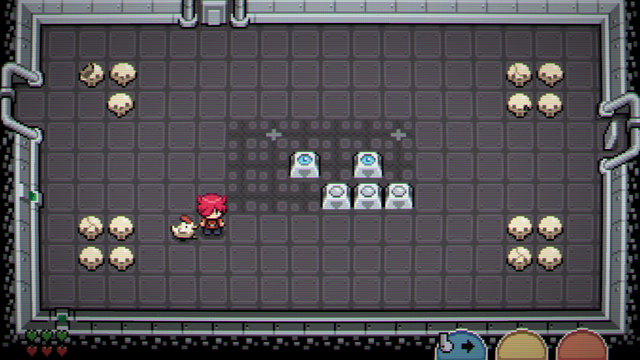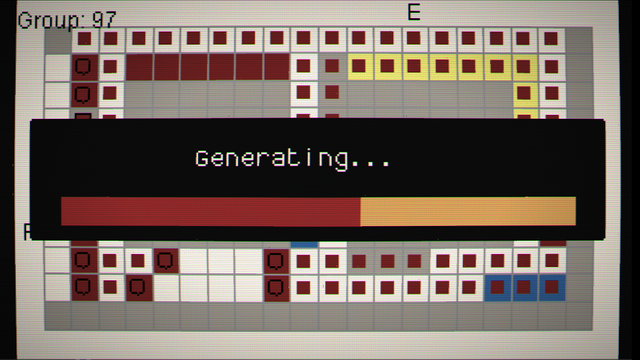Justice Bundle Reviews #2: Lenna's Inception
If you were to conduct a Family Feud survey titled "Trendy Elements in Indie Video Games", Lenna's Inception would hit at least five of the top ten. Retro visuals! Procedurally generated levels! Semi-sorta-nonviolent action required for the best ending!*
Merely saying a game does something popular is neither interesting nor helpful, though; the question is how well it executes on those concepts compared to the rest of a crowded field. And on the "retro graphics" point, Lenna's Inception excels. Everything looks just the way a Legend of Zelda homage ought to look, down to the pixel. What's more, the game offers you the option of a Game Boy-esque 8-bit scheme, or a 32-bit style that straddles the Super Nintendo and PlayStation eras of 2D art. Where does your nostalgia sit? Pick what feels cozy!
Rooms in Lenna's can be a bit sparse, at the generator's whim. But at least you have Henrietta the chicken to keep you company through the quiet stretches.
I found the procedural-generation elements of Lenna's Inception much less exciting, however. In concept, adding procgen to a Zelda homage has a note of brilliance to it: the already timeless Link to the Past saw a revival in speedrunning competition with the advent of ROM-hacked randomizers. Why not build a randomizer into the game from the outset? Unfortunately, rather than begin with a tightly crafted map ala LttP, then refresh the game's replayability by shuffling the locations of items and boss monsters, LI's creators at Bytten Studio opted to randomize the layouts of the overworld and dungeons as a core feature. The result is replayable, yes, but with a saddening amount of algorithmically produced filler. You'll trudge through screen after screen with the same nonthreatening monsters or no-brain-required block-pushing puzzles, their only purpose being connective tissue between the dice-rolled locations of game-critical encounters. Discovering a secret stairway loses its thrill after the third such limp mini-dungeon comprised of two empty rooms and a crafting material pickup.
Perhaps the true value of Lenna's procgen is turning on "Generator Visuals" and watching the resulting psychedelia whenever you enter a new dungeon.
The "pacifist route" of Lenna's has similar design issues. Say what you will about the heavy bludgeon of Undertale's after-school moral, it remains the gold standard for the trope in how carefully and thoughtfully it communicates its agenda. Even in the marketing copy before you ever download the game, UT makes it clear that "don't kill the monsters" is an option, something to strive for. Lenna's Inception gives you the barest hint in the form of a "Power of Compassion" item, somewhere between a third and halfway through the game, long past the point where playing the game straight as a Zelda-like has locked you out of getting the best ending. There's nothing in the game's storyline or themes that otherwise engages with nonviolence as a concept, either, making it truly feel like a trend-chasing afterthought.
Dunks aside, I still enjoyed LI enough to finish a playthrough, and I'd recommend it to anyone who craves a Zelda fix! $10 on Itch gets you a lot of brush-cutting swordswomanship.
* Also e.g. "femme protagonist" and "casual queer rep", but I wouldn't even facetiously hint that those are tired tropes. If every game between here and the year 2100 starred queer ladies, those of us still alive could start talking about scaling it back.

